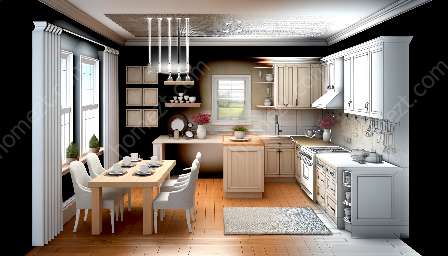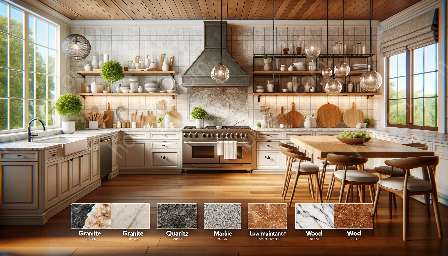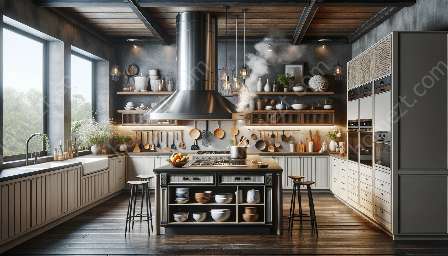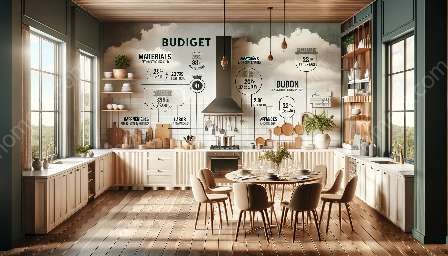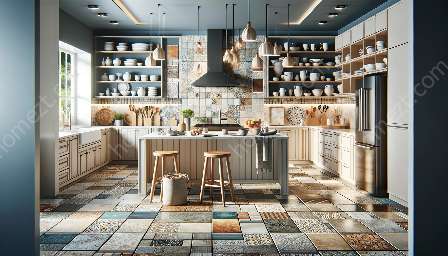Embarking on a kitchen renovation can be an exciting yet daunting task. One of the crucial elements of a successful kitchen makeover is the selection and installation of tiles. Your choice of tiles can drastically transform the look and feel of your kitchen and dining area. In this comprehensive guide, we delve into the intricate details of tile selection and installation, providing you with insights and tips to create a stunning and functional space.
Choosing the Right Tiles
Before diving into the installation process, it's essential to select tiles that not only complement your kitchen style but also fulfil the practical requirements. Consider the following factors when choosing the right tiles for your kitchen renovation:
- Material: Tiles are available in various materials such as ceramic, porcelain, glass, and natural stone. Each material has unique properties, and it's important to select one that suits your kitchen's functionality and aesthetic.
- Color and Pattern: The color and pattern of the tiles can significantly impact the overall look of your kitchen. Whether you opt for bold statement tiles or subtle, neutral hues, ensure that they harmonize with the existing color scheme and decor.
- Size and Shape: From standard square tiles to trendy geometric shapes, the size and shape of the tiles can create different visual effects. Consider the size of your kitchen space and the layout when making a decision.
- Durability and Maintenance: Kitchen tiles are exposed to high traffic, spills, and heat. Choose tiles that are durable and easy to maintain to ensure long-term functionality and visual appeal.
Tile Installation Process
Once you have carefully selected the perfect tiles for your kitchen renovation, it's time to embark on the installation process. Proper tile installation is crucial for ensuring a seamless and long-lasting finish. Here are the key steps involved in the tile installation process:
- Surface Preparation: The surface on which the tiles will be installed should be clean, flat, and structurally sound. Any unevenness or damage should be addressed before proceeding with the installation.
- Layout Design: Planning the layout of the tiles is essential to achieve a balanced and visually appealing result. Consider factors such as grout size, tile orientation, and pattern alignment during the layout design phase.
- Cutting and Fitting: Depending on the layout, some tiles may need to be cut to fit specific areas. Precise cutting and fitting are vital to ensure a professional finish.
- Adhesive Application: Applying the right type of adhesive is crucial for the tiles to adhere firmly to the surface. The adhesive should be selected based on the tile material and the surface it will be installed on.
- Grouting: Once the tiles are set in place, the next step is grouting. Grout not only fills the gaps between the tiles but also contributes to the overall aesthetic of the installation. Choose grout that complements the tiles and is suitable for kitchen use.
- Sealing: Depending on the tile material, sealing may be necessary to protect the tiles from staining and moisture. Proper sealing enhances the longevity and appearance of the tiles.
Enhancing Your Kitchen & Dining Area
With the tiles successfully installed, your kitchen renovation is well on its way to becoming a captivating and functional space. To further elevate the ambiance of your kitchen and dining area, consider the following additional enhancements:
- Lighting: Thoughtfully designed lighting can accentuate the beauty of the tiles and create a welcoming atmosphere in the kitchen. Explore pendant lights, under-cabinet lighting, and other fixtures to illuminate the space.
- Accessories and Decor: Add personal touches, such as decorative backsplashes, stylish cabinet hardware, and vibrant accessories, to infuse character into your kitchen and dining area.
- Functional Design Elements: Integrate functional design elements such as kitchen islands, breakfast bars, and storage solutions to optimize the usability of the space while complementing the tiled aesthetics.
- Maintenance Tips: Maintain the pristine condition of your kitchen tiles by following recommended maintenance practices, such as regular cleaning, avoiding harsh chemicals, and addressing any grout or tile issues promptly.
By paying careful attention to tile selection, installation, and additional enhancements, you can achieve a remarkable kitchen renovation that seamlessly integrates with your dining area, creating a space that is not only visually alluring but also practical and efficient.


